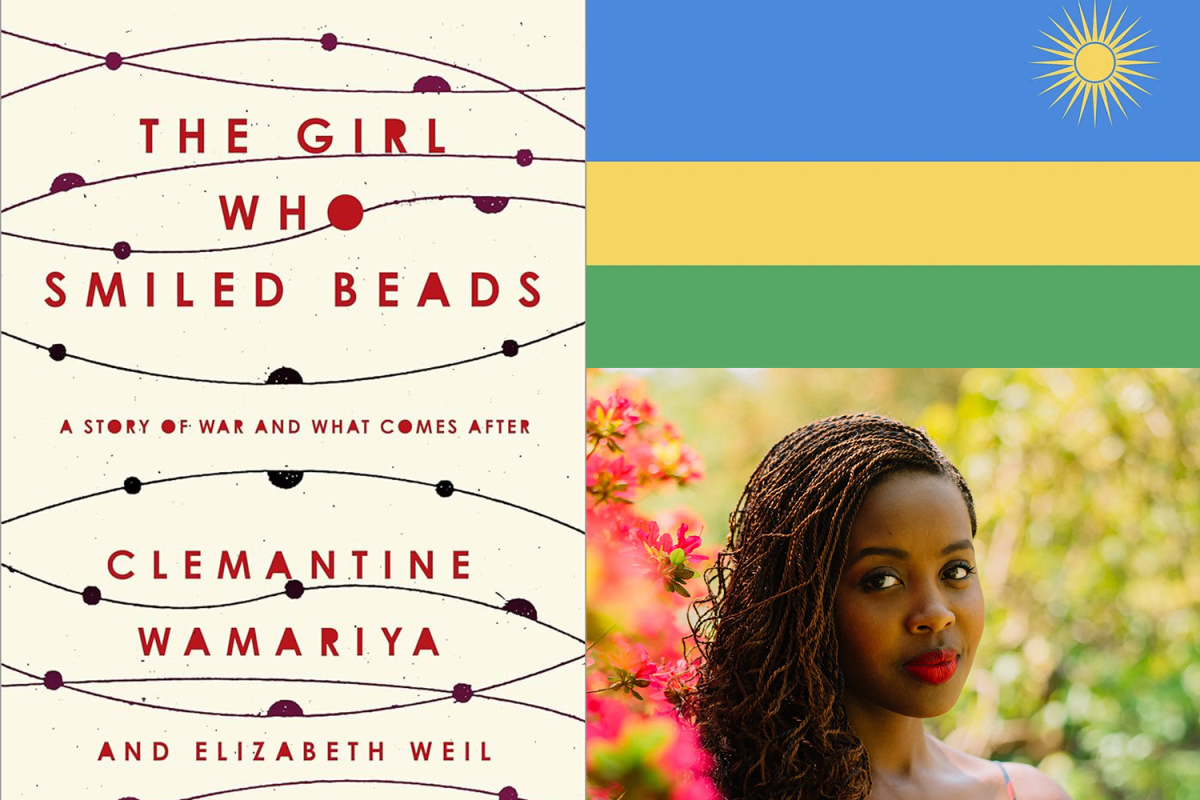Over the summer, rising seniors read Ms. Clemantine Wamariya’s bestselling memoir The Girl Who Smiled Beads (2018) in preparation for their final year at Sacred Heart Greenwich. In her novel, Ms. Wamariya reflects on her experience as a Rwandan refugee fleeing from war in her home country. The narrative explores war and what follows, featuring her experience in refugee camps and her assimilation as an immigrant to the United States (US). Throughout her journey, Ms. Wamariya illuminates themes of resilience, identity, and the profound impact of displacement, ultimately conveying a message of hope and the power of storytelling.
During the Rwandan genocide of 1994, the Hutus killed an estimated 800,000 members of the Tutsi ethnic group in just 100 days, according to britannica.com. This violent conflict reflects the trauma and upheaval individuals faced in a country marked by deep-seated ethnic divisions exacerbated by colonial rule. The conflict between the Tutsi minority and Hutu majority in Rwanda began long before the genocide, with colonial rule favoring the Tutsi. The Rwandan Civil War, spanning from 1990 to 1994, served as a precursor to the genocide, as the Rwandan Patriotic Front, composed mainly of Tutsi exiles, launched an invasion against the Hutu-led government. These events led to widespread violence and ethnic strife, according to history.com.

Amidst the backdrop of war that disrupted her childhood, Ms. Wamariya’s experiences serve as a powerful testament to the resilience of the human spirit. At six years old, she and her older sister, Ms. Claire Wamariya, fled their home as violence engulfed their country. They journeyed across multiple African nations, enduring dire conditions in unsafe refugee camps where they faced severe shortages of food and water. The persistent threat of danger and the pain of separation from their parents deeply impacted their understanding of loss and survival. Dr. Cristina Baptista, Upper School English Teacher, Committee on Community and Belonging Chair, and Perspectives Advisor, found this text vital in her Advanced Placement (AP) English Literature class discussion.
“Heartfelt, painful, earnest, thought-provoking, and urgent, this memoir tells the real-life story of a young African girl who, along with her older sister, fled the Rwandan massacre of the 1990s,” Dr. Baptista said. “They wander through more than half a dozen African countries, always at risk, starving, unsafe, and vulnerable. They lose all hope of being reunited with their parents. Eventually, they make it to America, and while amazing opportunities and moments of kindness emerge, despair, pain, confusion, and fear remain.”

Upon arriving to the US, Ms. Wamariya confronted a new set of challenges as she navigated life as an immigrant. The language barrier hindered her ability to communicate, and cultural differences made her feel isolated. However, she encountered kindness and support from individuals and organizations that helped her adapt. Ms. Wamariya seized educational opportunities, using her traumatic experiences as a drive to succeed. Despite moments of confusion and fear, she found strength in the resilience that defines her story. Senior Julia Stiker, member of the AP English Literature class, reflected on her experience as a reader.
“[Ms. Wamariya] writes in a way that is visually and emotionally accessible for the reader. Each time she was displaced, I could feel how she was slowly losing herself with each country and refugee camp she left behind,” Julia said. “[Ms. Wamariya] crafts a moving, compelling memoir that deeply stirs readers.”
Featured Image by Sofia Latrille ’25





Dr. Cristina J. Baptista • Oct 18, 2024 at 4:09 pm
This is a beautiful tribute to art that is raw, real, and resonant with us in multiple ways. Thank you for allowing me to be part of your reflection upon The Girl Who Smiled Beads, the potency of memoir and literature, and the book’s value in our curriculum, Sofia! (And nice shout-out to AP Literature.)